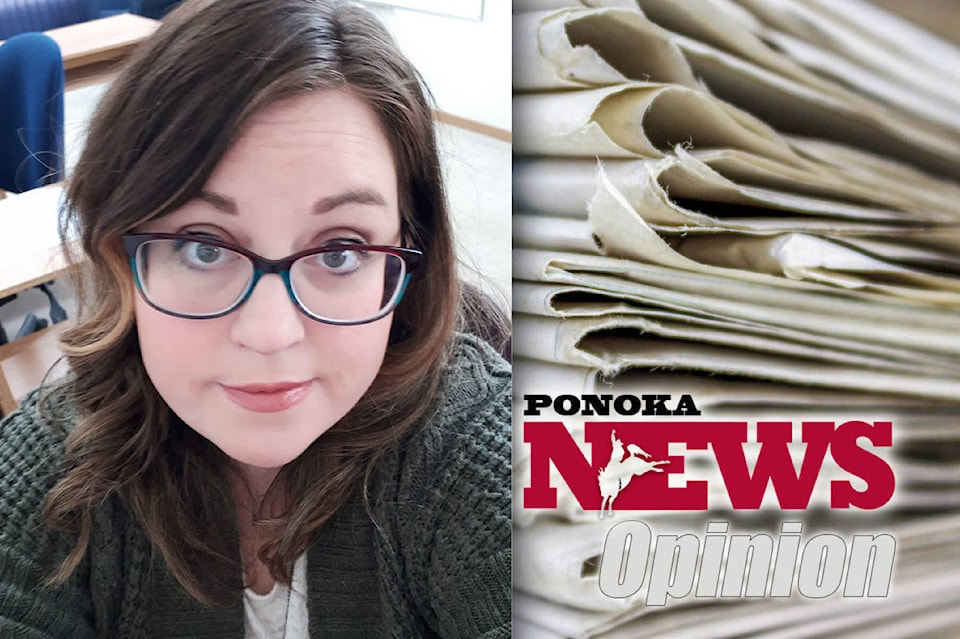There is widespread racism in Canada, and its name is ignorance; ignorance of history, and inherent biases, and the lack of willingness to do anything about it.
To have a meaningful conversation about racism and enact meaningful change in this nation, first it is necessary to dismantle the flawed arguments, misconceptions and mistruths that allow it to exist.
Important definitions to start with include what systemic racism really is and understanding what confirmation bias and inherent bias are.
Systemic racism doesn’t necessarily mean that racism is rampant, but rather it means that the systems of a country were created to give one group the advantage over others. Examples of this in America are “red-zoning,” housing discrimination, the wealth gap, and so on.
In Canada, systemic racism is evident in the segregation of Indigenous peoples through the Indian Act, the reserve system, the advancement of the “Indian Problem,” dogma and the horrific history of residential schools.
These were all concerted efforts to undermine, subvert, and control Indigenous peoples in Canada.
Inherent bias is the underlying, or unconscious beliefs or assumptions that shape one’s point of view, without questioning or challenging them.
One can research endlessly, but if one is only reading sources that already align with their own point of view, it will only reinforce an existing position and cause any dissenting point of view to seem illogical or fallacious, simply because it doesn’t confirm what is already believed. This is confirmation bias.
Confirmation bias blinds one to any other argument or point of view, whether it is supported by facts or not. Instead of being reasonable, one is actually being partisan.
View points can, and should, shift, change and evolve as one seeks out and internalizes new information.
Those who re-post famous Black people espousing a view that aligns with their own, but are unwilling to explore other views from Black people or People of Colour, are weaponizing those voices to confirm their own bias.
Arguments that need to be torn down include:
“All Lives Matter, my life matters too!”
It shouldn’t need to be said, but there is no “only” in front of “Black Lives Matter.” Specificity does not equal exclusion or superiority. Those who feel threatened or affronted by BLM should ask themselves why.
If one feels an immediate need to invalidate or dispute a cause that is not their own, therein lies the problem.
Also, BLM has nothing to do with Black-on-Black crime. It is an awareness campaign about how Black people face systemic racism and the assertion that, statistically, Black people are more likely to have their lives ended by police in the United States.
That is what it is about. Period.
“Yeah, but it isn’t happening here.”
While Canada may not have a large Black population, or as ingrained a history with slavery, it has its own history of oppression and abuse of another race: Indigenous peoples.
While some of the worst residential schools could be said to have operated during the 70s, the last residential school in Canada didn’t close until 1996. This was a mere 24 years ago, and the survivors are still coping with the aftermath of abuse, trauma and inter-generational trauma.
Another example of systemic racism against Indigenous peoples is that until 1985, Aboriginal women lost their Indian status if they married someone who did not have Indian status (elections.ca).
Canadian history can not just be swept under the rug because it makes one uncomfortable. It cannot just be wished away or avoided with the excuse of, “That was a long time ago,” or “It has nothing to do with me.”
Caucasian Canadians can impart empathy and compassion without assuming blame or responsibility.
Nothing can ever make up for those atrocities committed and the injustices, but all Canadians can at least stop asking victims to just forget and move on.
One needs to ask oneself, if it had been their child who had been taken, held, indoctrinated, traumatized and abused, if they would ever let the matter lie?
Furthermore, what happens in the States does have an impact here in Canada. We are more connected as a human family than we are divided by political borders.
There is a history of racial movements in the States spurring change in Canada. Case-in-point, Canada only gave “registered Indians” the right to vote in 1960, after the American South was receiving international pressure for not giving Black people the right to vote.
Racism is alive and well in Alberta today — just look at Premier Jason Kenney’s speech writer Paul Brunner denying the atrocities of residential schools, or Erik Cabry dying in the Edmonton Remand Centre on June 21, 2020, after pleas for medical attention from his brother went unheeded three times.
It is entirely possible that inherent bias was at play if the cries for help were disbelieved, and staff involved were slow to respond, or weren’t thorough on the first medical check, although the Alberta Ministry of Justice and Solicitor General has stated staff and medical personnel responded quickly and professionally.
Racism is a spectrum. It may be covert on one side, such as inherent bias, or overt on the other with flagrant hatred and prejudice.
In the words of the authors of Indigenous experiences with racism and its impacts, racism is experienced “sometimes quietly, sometimes covertly … but always unjustly.”
Regardless of its form, racist systems, attitudes and beliefs all need to be torn down. Society as a whole needs to demand better.
